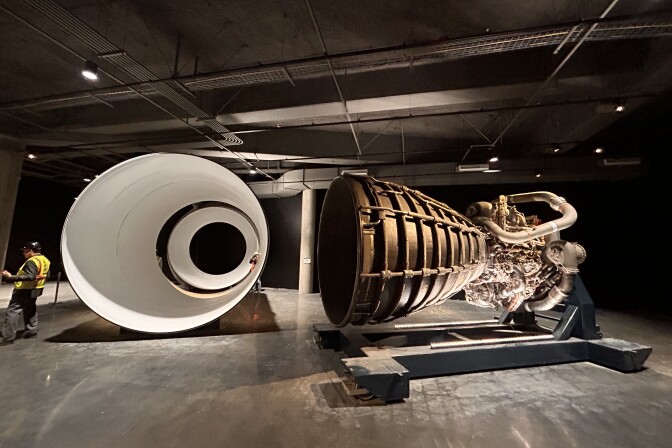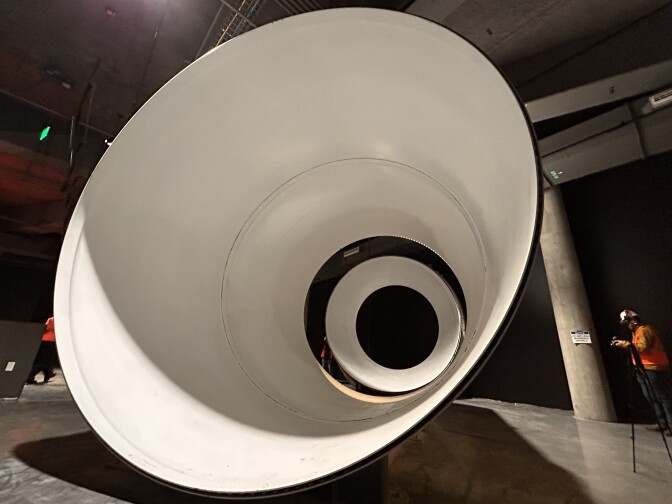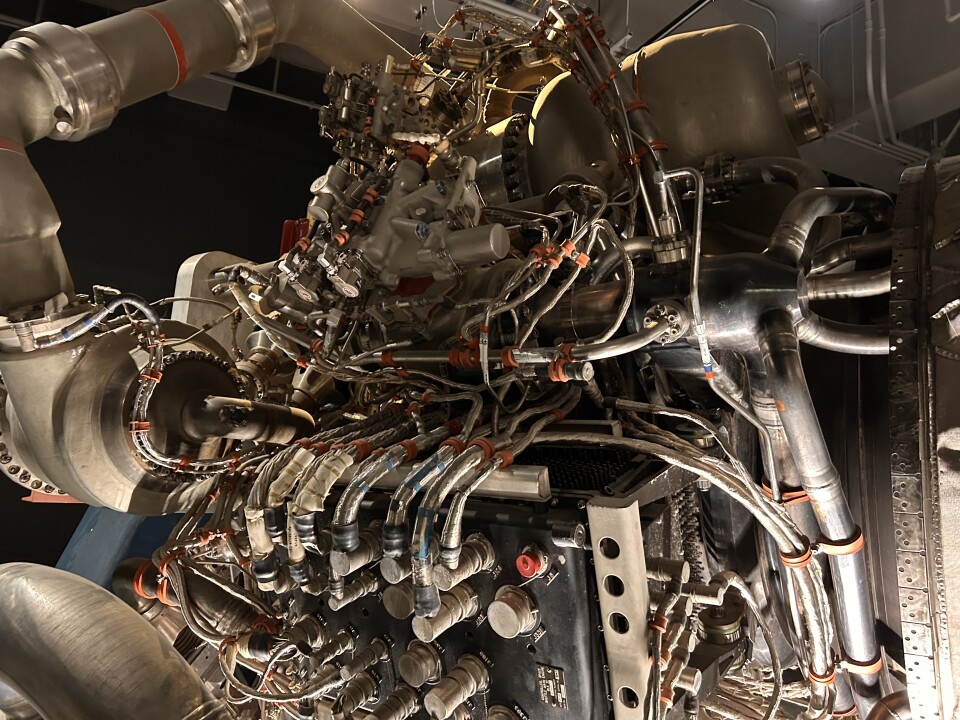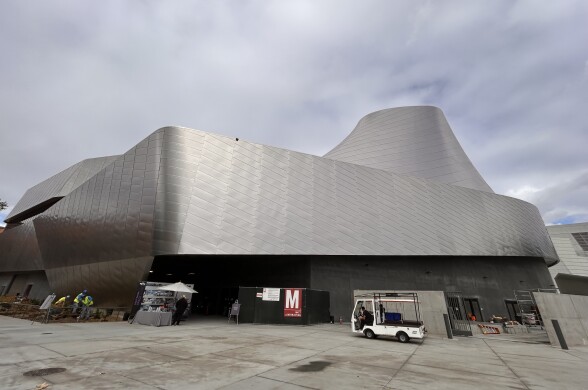Gov. Gavin Newsom today signed a set of bills meant to check the Trump administration’s aggressive immigration crackdown in California, including measures that limit their access on schools and force them to identify themselves in public.
The new laws echo the “resistance” measures California adopted during the first administration, when it passed a so-called sanctuary law to limit local law enforcement from cooperating with immigration agents, among other policies.
President Trump promised a historic deportation effort and assault on sanctuary-style policies when he took office for the second time. His administration criticized the state’s new immigration laws even before Newsom signed them.
The Department of Homeland Security earlier this week called on Newsom to veto the mask bill — one of the more contentious pieces of immigration legislation — calling it “despicable.”
“Once again sanctuary politicians are trying to outlaw officers wearing masks to protect themselves from being doxed and targeted by known and suspected terrorist sympathizers,” said Assistant Secretary Tricia McLaughlin in a Sept. 16 press release.
California may struggle to enforce the new laws, some of which have already raised constitutional questions around the state’s role in federal operations, but lawmakers maintain that they are legally defensible.
California political consultant Mike Madrid said in signing the laws Newsom is showing that he can stand up and fight, whether or not he has a chance of winning.
“In this moment, when there are very few cards to play for state governments and state legislatures, California has done what no other state has done: establish itself as the tip of the spear on resisting a lot of these efforts that are an affront to its values,” said Madrid, a longtime Republican consultant who co-founded the anti-Trump Lincoln Project.
“99% of this is the purview of the federal government. So a lot of it is just symbolic, but symbolism matters. It’s both politically astute but also morally right,” he said.
The package of bills Newsom signed included:
- Assembly Bill 49 prohibits schools from allowing immigration enforcement officers on campus without a warrant.
- Senate Bill 627 widely prohibits federal and local law enforcement officers from wearing face masks while conducting their duties.
- Senate Bill 805 requires that law enforcement officers identify themselves while conducting their duties, with some exceptions.
- Senate Bill 81 prohibits immigration enforcement from entering restricted areas of a health facility without a judicial warrant or court order.
- Senate Bill 98 requires schools and higher education institutions to send community notifications when immigration enforcement is on campus, and prohibits immigration enforcement from entering certain areas without a judicial warrant or court order.
California Democrats began drafting immigration-related bills almost as soon Trump took office in January. Those efforts accelerated after the Trump administration launched aggressive immigration sweeps throughout Los Angeles, which led to weeks of protests and a subsequent National Guard deployment.
“All of this legislative resistance is to protect Angelenos from their own federal government. That is profound,” Los Angeles Mayor Karen Bass said at a news conference with Newsom and other Democratic leaders.
Will the laws make a difference?
Kevin Johnson, an immigration law professor and former dean of the UC Davis School of Law, said the legislation may have a marginal impact on federal immigration enforcement operations.
In 2018, for instance, California passed a law to restrict immigration arrests at superior court buildings. That hasn’t stopped the Trump administration from detaining people at those courts this year.
“The federal government is going to continue doing what it’s doing, in one form or another,” he said. “I do think the legislation gives some hope and optimism to communities that feel under fire, vulnerable and basically hated by the federal government.”
Shiu-Ming Cheer, deputy director at California Immigrant Policy Center, remains hopeful that the package of bills will ensure safety for people attending school and accessing health care.
“With most laws, there has to be really vigorous monitoring, both by the state as well as by advocates to ensure that it’s truly being implemented and followed,” she said.
California police opposed mask ban
The most controversial bill in the package was Democratic Sen. Scott Wiener’s proposal to widely ban federal and local law enforcement officers from wearing face masks while conducting their duties. The law, also known as the “No Secret Police Act,” does not apply to certain forms of face coverings, such as face shields, and it exempts some officers, including those who are undercover. Officers who violate the law will face an infraction or misdemeanor.
Wiener and Democratic Sens. Jesse Arreguín, Sasha Pérez and Aisha Wahab championed the legislation after seeing footage of masked and unidentifiable agents carrying out operations.
“ICE’s recklessness creates chaos as agents run around with what are effectively ski masks and no identification, grabbing people, throwing them in unmarked vehicles, and disappearing them,” Wiener of San Francisco said at a legislative hearing in August. “When law enforcement officers hide their identities, it destroys community trust.”
California’s law enforcement groups widely opposed the bill, arguing it will largely apply to local police, rather than federal agents, because the federal government is likely to sue on constitutional grounds.
“It’s using an emotionally charged issue on a federal level to pass a bill that will only affect local peace officers,” said Brian Marvel, president of the Peace Officers Research Association of California, an umbrella labor organization that lobbies on behalf of police unions. “You’re upset with the feds, but you’re going to punish us.”
Other law enforcement experts echoed those concerns, arguing that it’s illegal to interfere with federal operations.
“California cops are not going to enforce this law,” said Ed Obayashi, a longtime California police officer who now is a special prosecutor and policy adviser to the Modoc County Sheriff’s Office. “You cannot regulate lawful federal conduct, whether the Legislature likes it or not.”
The law allows officers to be sued personally for “tortious conduct,” including if they assault or falsely arrest someone while masked.
“Private enforcement could be the avenue where enforcement is the likeliest,” said Johnson.
The bill caused hours of contentious debate on the Senate and Assembly floors, with many Republicans calling it misguided.
“My immigrant family is not afraid” of ramped-up immigration enforcement, Fresno Republican Assemblymember David Tangipa said, “because we did not break the law.”
But Democrats were animated because just days before, the U.S. Supreme Court had sided with the Trump administration and ICE for conducting roving sweeps through Los Angeles, apparently catching bystander day laborers or anyone who appeared Latino in their dragnet. The bill, they said, was their way of pushing back.
“We need a full front defense for the violence that is coming from this regime,” said Hector Pereyra, policy manager for the nonprofit Inland Coalition for Immigrant Justice, which co-sponsored the mask bill and another bill to protect the private data of street vendors. “We have to respond with a united front of strength and aggressiveness, not of passiveness.”
Cayla Mihalovich is a California Local News fellow.

















